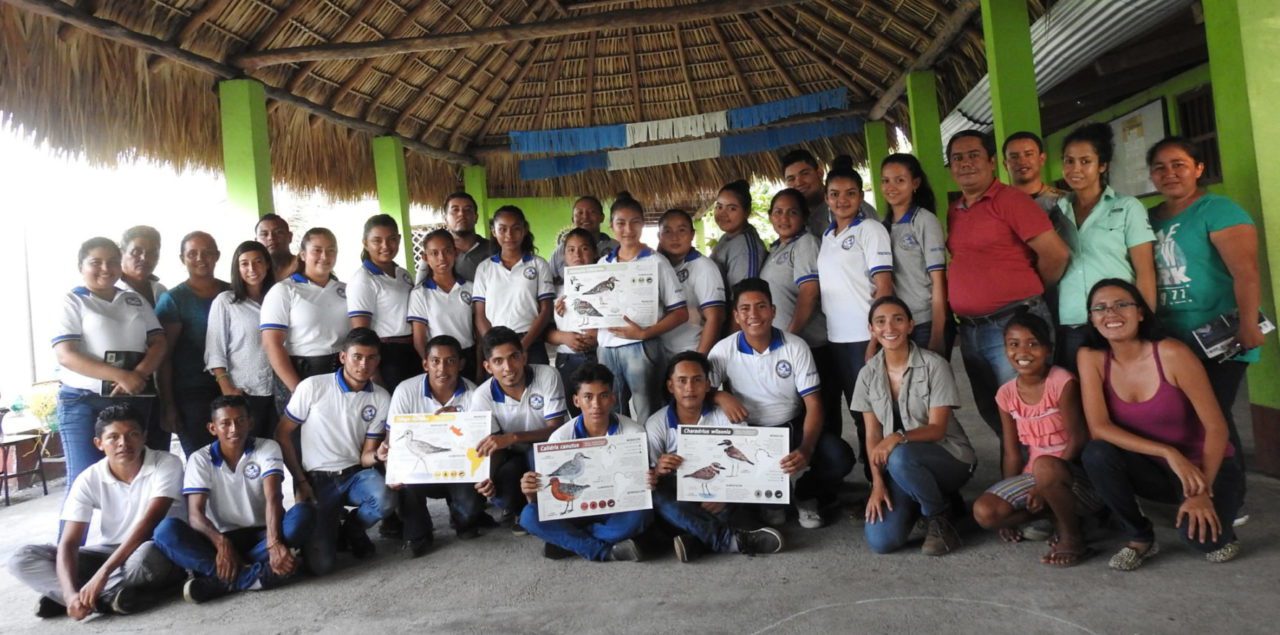Varinia Sagastume

Strategies for the Conservation of Shorebirds Using Best Management Practices of Salt and Shrimp Farms of the Guatemalan Pacific Coast
Project Site: Sipacate, Guatemala
Sector: NGO
Disciplines: Ornithology, Aquaculture, Planning, Conservation, Management
Collaborators: Wildlife Conservation Society, ACUAMAYA, Sipacate-Naranjo National Park, National Council of Protected Areas (CONAP), Institute for Marine Sciences and Limnology-UNAM, Salinera Santa Alejandra
Varinia is a Guatemalan biologist who graduated from Universidad del Valle de Guatemala. She has a Master’s degree in Wildlife Conservation and Management from the National University of Costa Rica. Since January 2019, she has led the project “Conserving Artic Shorebirds in Guatemala” as part of the Wildlife Conservation Society (WCS) team on the Pacific coast of Guatemala, where she has directed and participated in shorebird surveys, as well as in activities of environmental education and awareness. In the summer of 2019, she was in Alaska helping lead the WCS shorebird nest monitoring program. Varinia actively promotes and participates in activities of ornithology, conservation and management, community monitoring and sustainable aquaculture.

Aquaculture, as well as the use and management of water, are among the main threats to shorebirds along the Migratory Pacific Flyway and are considered as possible factors responsible for the decrease of their populations. In the Pacific coast of Guatemala, these threats are reflected in the modification of coastal wetlands and the loss of estuaries.
With the disappearance of natural habitats due to human activity, some artificial habitats (such as salt and shrimp ponds) become alternative sites for feeding, resting and reproduction for shorebirds. In Guatemala, ponds with semi-intensive management still show groundwater infiltration, which make them productive for birds during most of the tidal cycle. Unfortunately, changes in management practices have caused most of the ponds to be covered with a plastic liner and do not present favorable conditions for shorebirds. This transformation from semi-intensive production systems to intensive and hyper-intensive systems has further diminished the opportunities for the conservation of these bird species in Guatemala.
For this reason, the vision of this project is to transform the threats and risks of salt and shrimp production practices into opportunities for both the producers and for the conservation of shorebirds in Guatemala. To achieve this, a participatory strategic plan will be developed to establish the strategies and actions in the management of salt and shrimp farms to favor the quality and availability of habitat for shorebirds, and to provide additional benefits for producers and local communities. Additionally, we will seek agreements with producers to implement the recommendations and increase the reach of these strategies.
The Wildlife Conservation Society, the host institution for this project, is an international NGO whose mission is to protect wildlife and their habitats through science, conservation and education. The WCS-Guatemala program began in 1992 and the Marine Program was launched in 2017, which maintains collaborations with various institutions interested in the creation and expansion of marine protected areas along the Pacific.